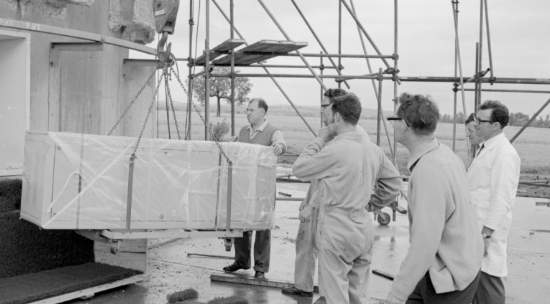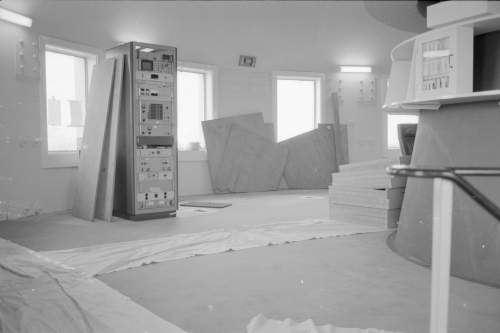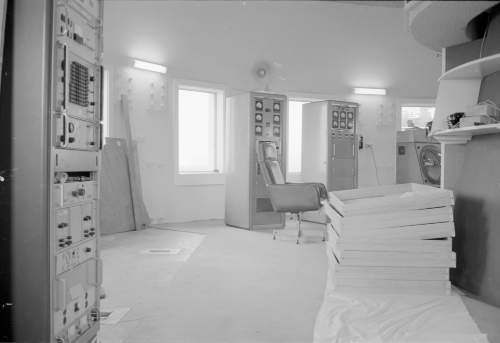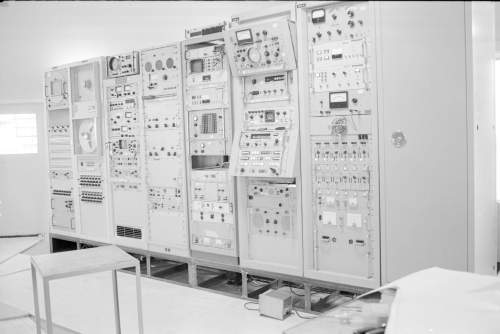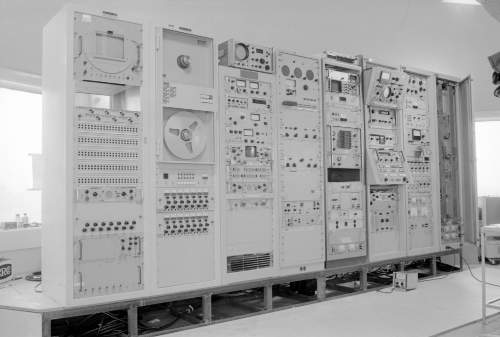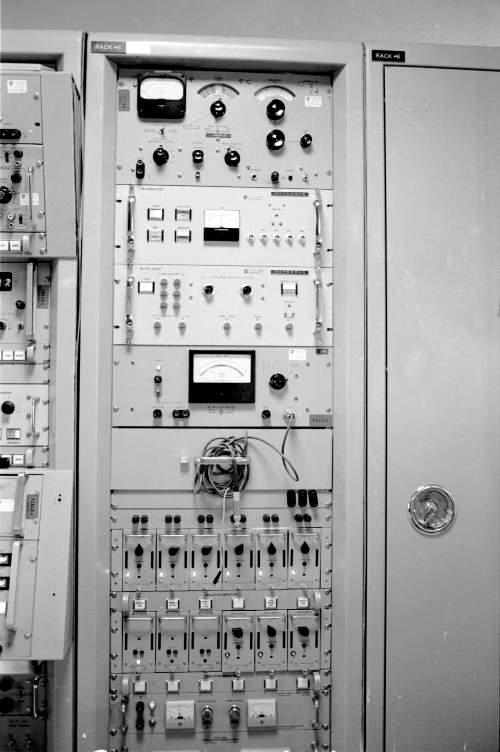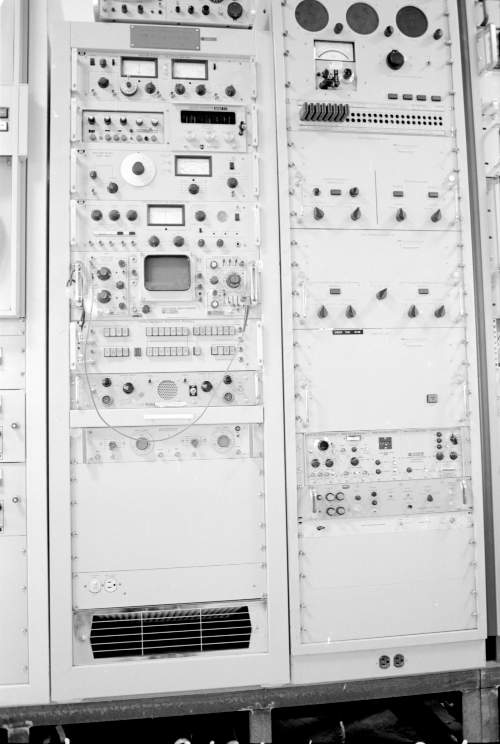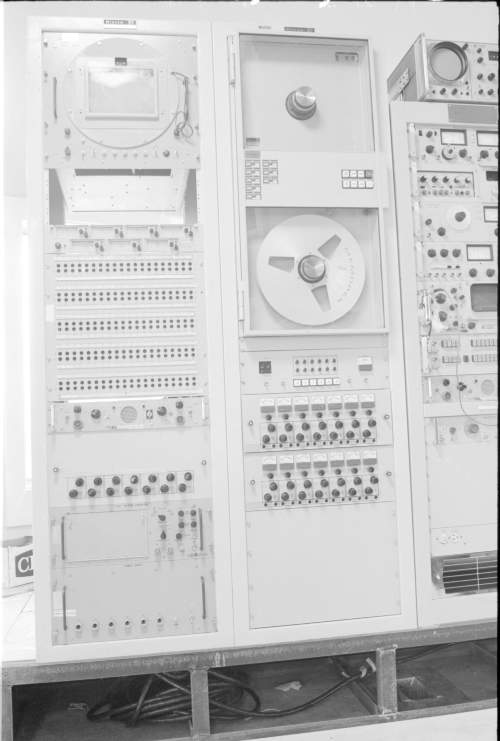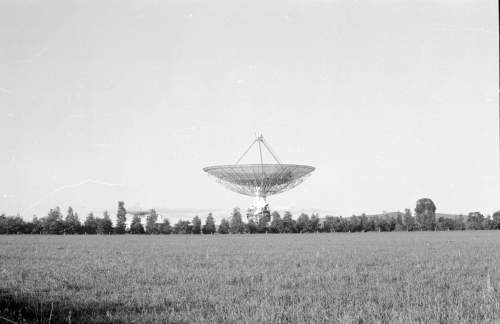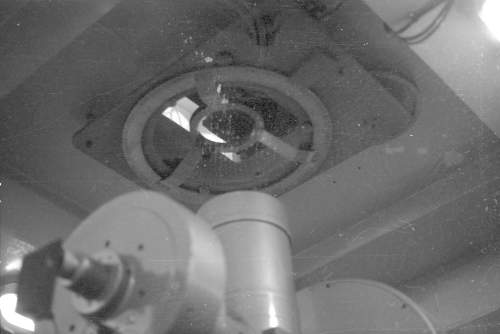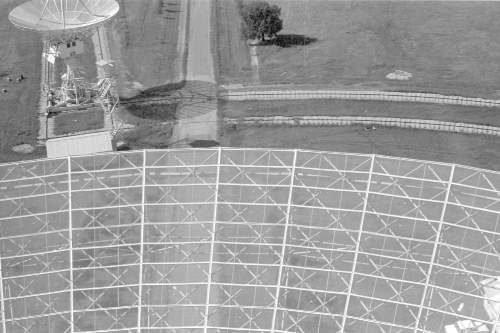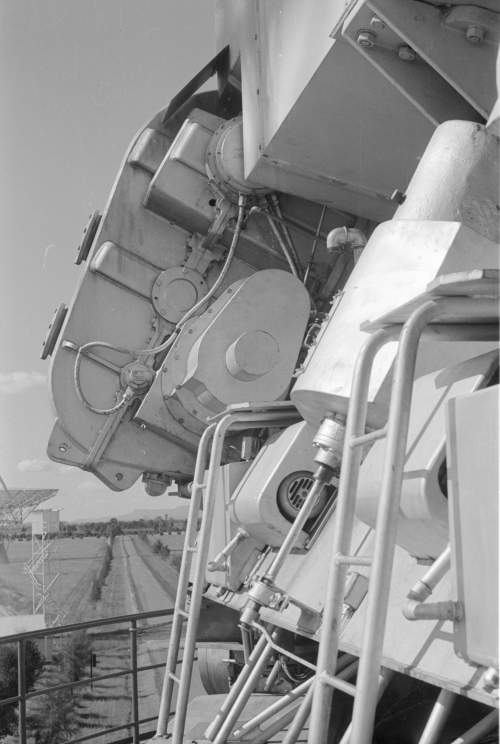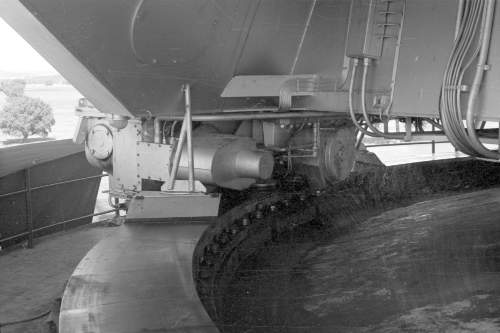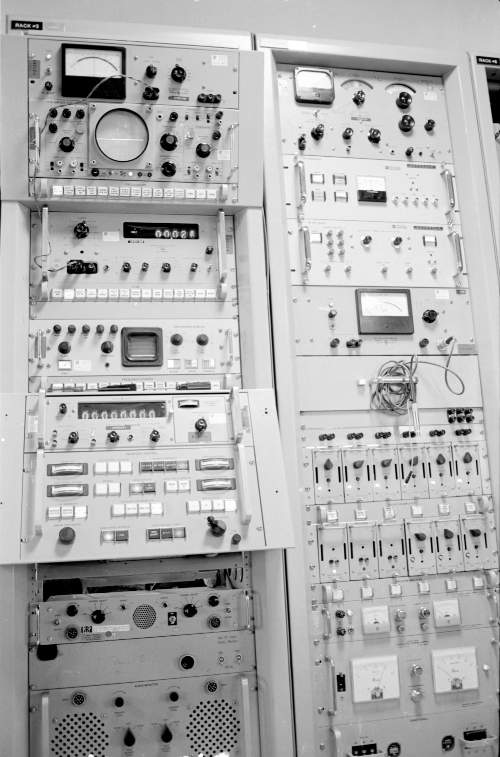Limited NASA equipment was installed at Parkes for Apollo 10 and Apollo 11. During Apollo 11, a small team led by Goddard Space Flight Center’s Robert Taylor travelled to Parkes.
For later Apollo missions, a more permanent arrangement was made. In October 1969, in preparation for Apollo 12, additional Manned Space Flight Network Unified S-Band equipment was delivered and installed. At the same time the Parkes Radio Telescope Tower was being strengthened.
“Prior to Apollo 11, John Bolton and consultants Freeman Fox had been actively engaged in a study of the tower which had been recognised as seriously weak.
With the memory of the Apollo 11 windstorm still fresh in his mind, Taffy Bowen decided that the tower had to be reinforced before the Apollo 12 mission in November 1969. Seven weeks of working two shifts a day saw the tower stiffened and major modifications made to the air conditioning (Goddard & Milne 1994).
Jasper Wall relates:
‘I remember the strengthening well, all of us involved of course, JB mixing the track grout to ensure that it was the correct strength, me operating the crane, typical Bolton team.
The control room was completely rearranged, and equipment from one of the previously down-range tracking ships, the USNS Vanguard, was installed for a period that was to last nearly four years.
Instead of American personnel to operate the back-ends of the receivers and tape recorders, the technical staff came from NASA’s Deep Space tracking station at Tidbinbilla near Canberra. Dave Cooke was responsible for the focus cabin equipment.’ ”
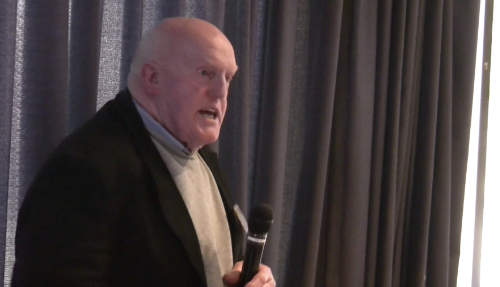 |
Parkes Telescope Driver Neil “Fox” Mason recalls the windstorm during the Apollo 11 EVA which led to the radio telescope tower being strengthened. External link to Vimeo.
Neil spoke at the Apollo 11 45th gathering in Canberra in 2014. (External link to Vimeo.)
|
The photos below, preserved by Hamish Lindsay, were taken at Parkes in mid to late October 1969 and the 35mm negatives were scanned by Colin Mackellar in 2023. Ian Grant likely took many of them.
The control room was cleared to make space for the Apollo Unified S-Band equipment. Everything was installed and ready for the launch of Apollo 12 just weeks later on 15th (AEST) November 1969.
The Parkes team constructed a 4-inch high plenum on which to mount the Apollo equipment. The plenum allowed for cabling to be run and for air conditioning to be piped-in to cool the racks. The team from Tidbinbilla, overseen by Honeysuckle Deputy Director Ian Grant, installed the USB equipment.
Concurrent with the Apollo equipment arriving, the work to reinforce the tower by adding a concrete jacket and steel ties was taking place, and the control room was being painted – a very busy time!
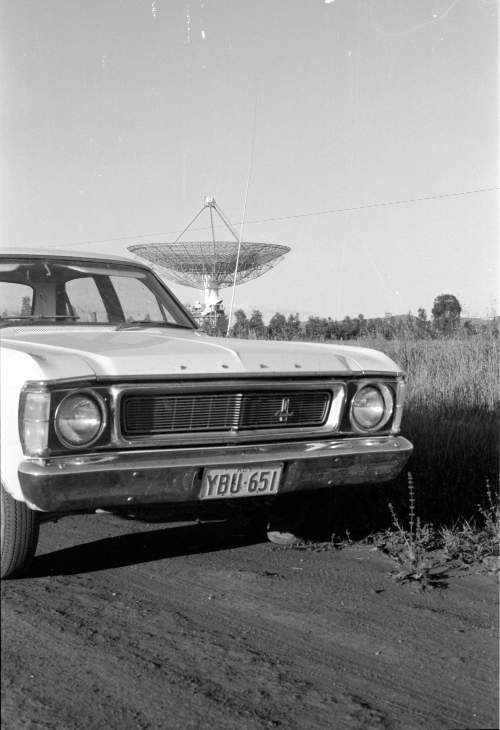 |
HSK 5/9/8/6-9
The team from Tidbinbilla had driven up from Canberra.
|
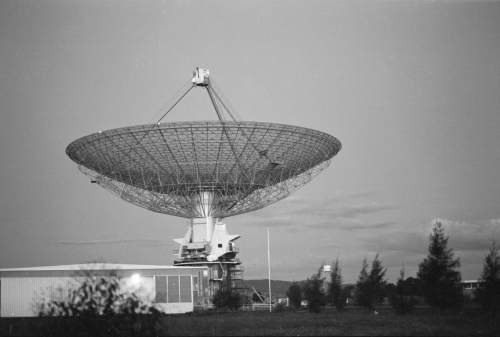 |
HSK 5/9/8/6-10
The Parkes 64 metre (210 foot) antenna.
|
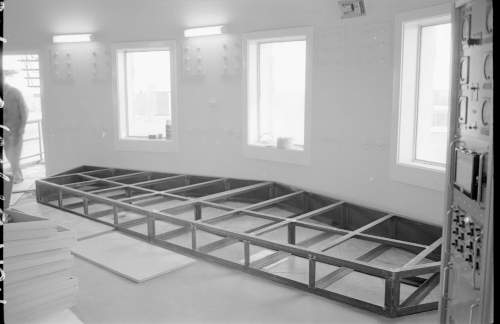 |
HSK 5/9/8/6-42.
Inside the control room – the steel frame of the plenum.
|
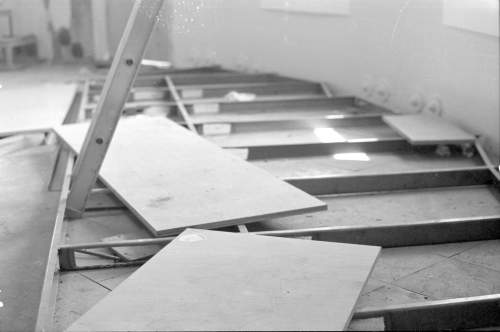 |
HSK 5/9/8/6-19
The plenum under construction.
|
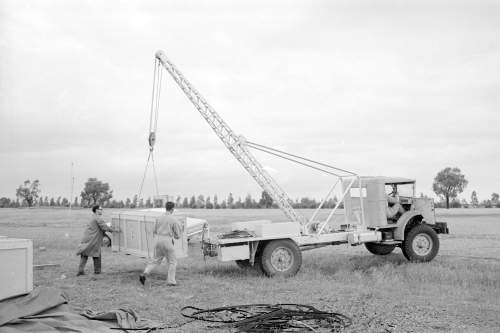 |
HSK 5/9/8/6-28
Outside, NASA equipment is being unloaded. Ian Grant is at left.
|
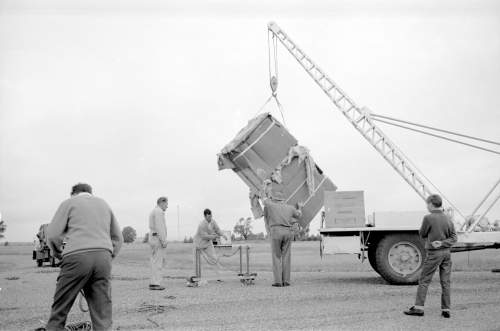 |
HSK 5/9/8/6-29
More equipment, including a Conrac television monitor.
|
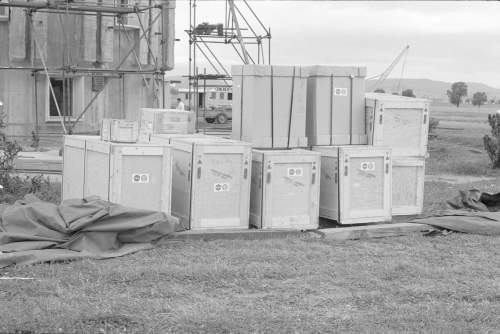 |
HSK 5/9/8/6-38.
Crates waiting to be opened.
|
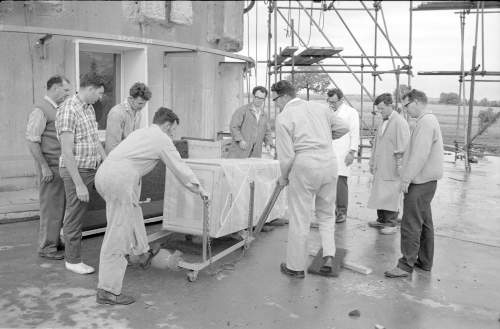 |
HSK 5/9/8/6-33
Apollo equipment about to attached to a trolley to lift it into the tower.
Note the concrete jacket in the process of being added to the outside of the Parkes Radio Telescope tower.
Photo preserved by Hamish Lindsay. 35mm negative scan: Colin Mackellar. Key below.
|
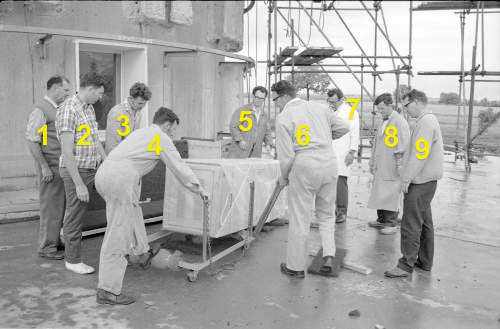 |
Key, Left to Right:
1. Reg Stevens, Station Manager, CSIRO, Parkes Observatory.
2. William Reytar, NASA Goddard.
3. Sid Horner, Laboratory Craftsman / Carpenter, Parkes (on Cliff Smith’s team).
4. Derek Fellows, Laboratory Craftsman / Labourer, Parkes (on Cliff Smith’s team).
5. Ian Grant, Deputy Director, Honeysuckle Creek. Overseeing the installation.
6. Cliff Smith, Site Foreman, CSIRO, Parkes.
7. Roy Stewart, Tidbinbilla, Engineer in Charge of SpaceTrack
staff.
8. Jack Dickinson, RF Senior Technician, Tidbinbilla.
9. David Cooke, Senior Receiver Engineer, CSIRO, Parkes.
With thanks to Bruce Window, Ben Lam, John Sarkissian and Peter Stevens for the names.
|
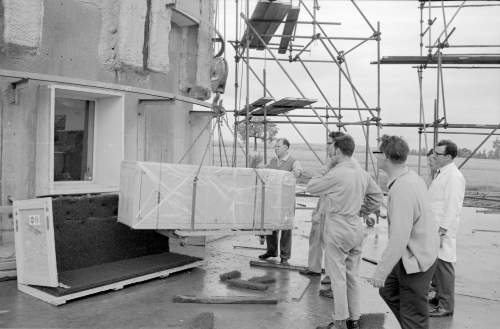 |
HSK 5/9/8/6-34
Up goes the rack.
|
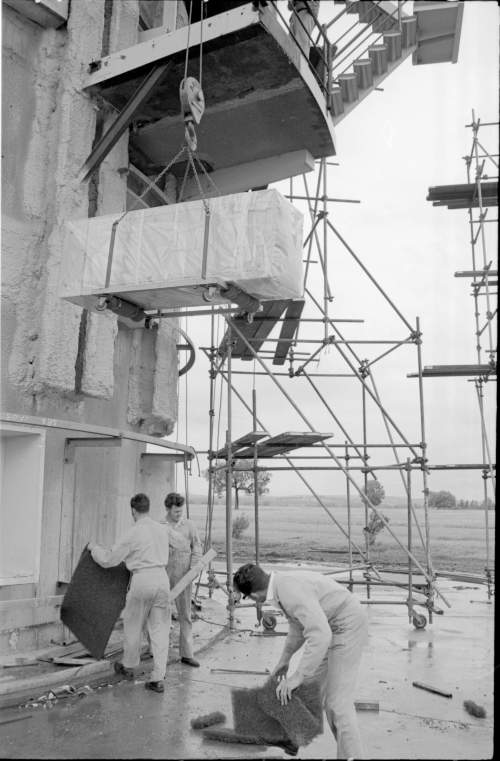 |
HSK 5/9/8/6-35
Let’s hope that hoist is secure!
|
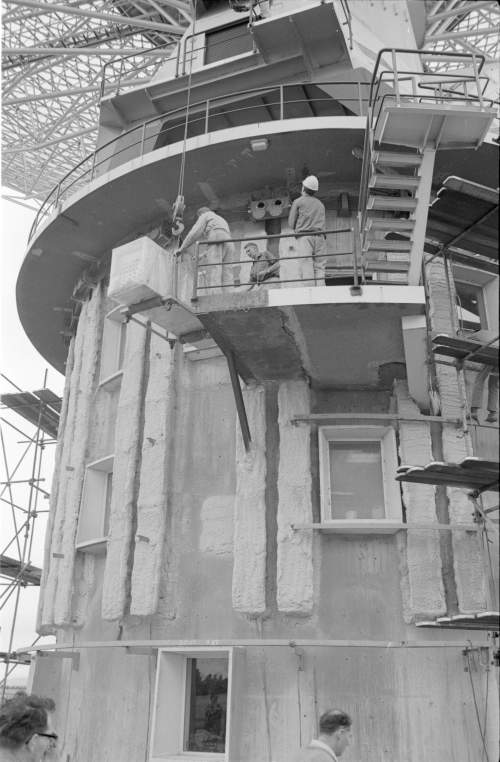 |
HSK 5/9/8/6-36
Looking up, the rack is about to be lifted onto the landing to be trundled into the control room.
|
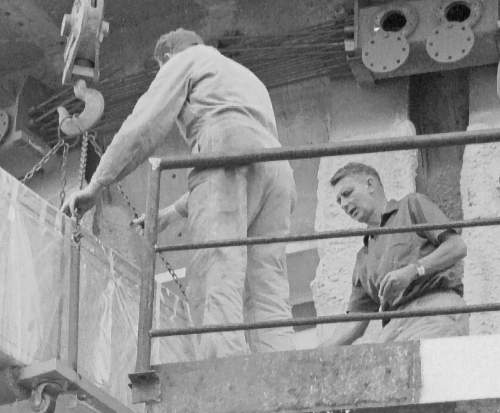 |
HSK 5/9/8/6-36 - detail.
Detail from the above photo shows Parkes Director Dr. John Bolton at right.
|
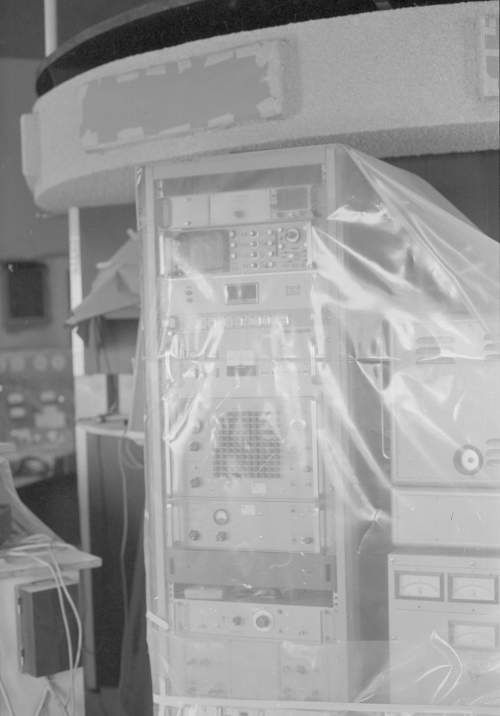 |
HSK 5/9/8/6-20
NASA equipment – Receiver rack in centre – waiting to be installed on the plenum. It’s temporarily stored next to the central column and is under wraps for protection from dust and paint. The air-conditioning vents above are also covered.
|
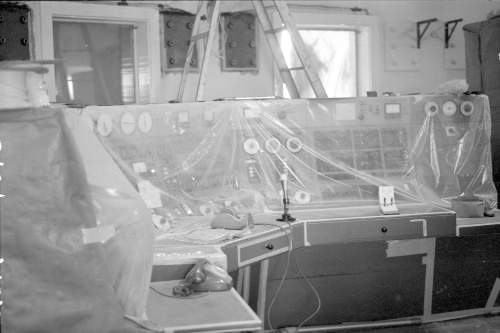 |
HSK 5/9/8/6-21
Parkes’ control desk (built by Askania-Werke) is covered in plastic for protection.
Note the as-yet unpainted bolts and steel plates in the wall as part of the reinforcing of the tower.
The desk calendar is open to the weekend of 18-19 October 1969.
|
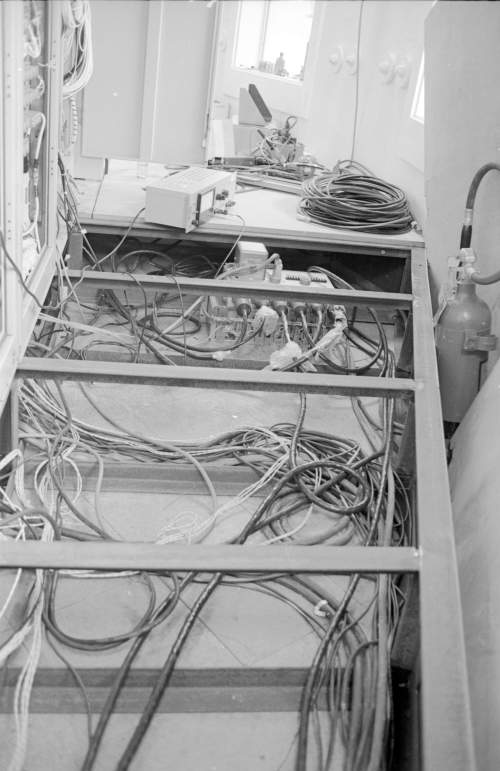 |
HSK 5/9/8/6-24
Cabling under the pedestal in preparation for the placement of the NASA equipment.
|
Some other views of the Radio Telescope.
